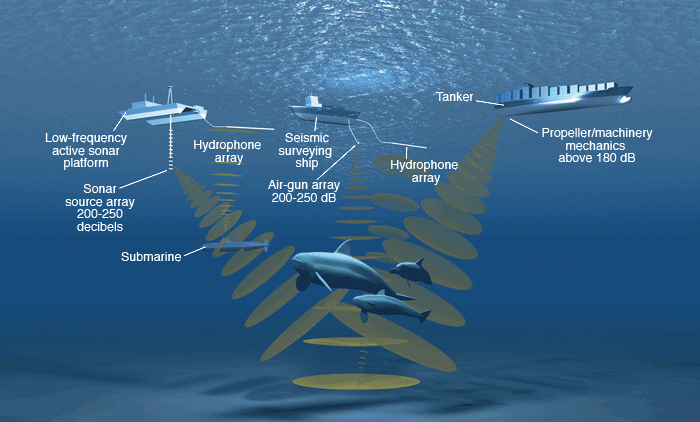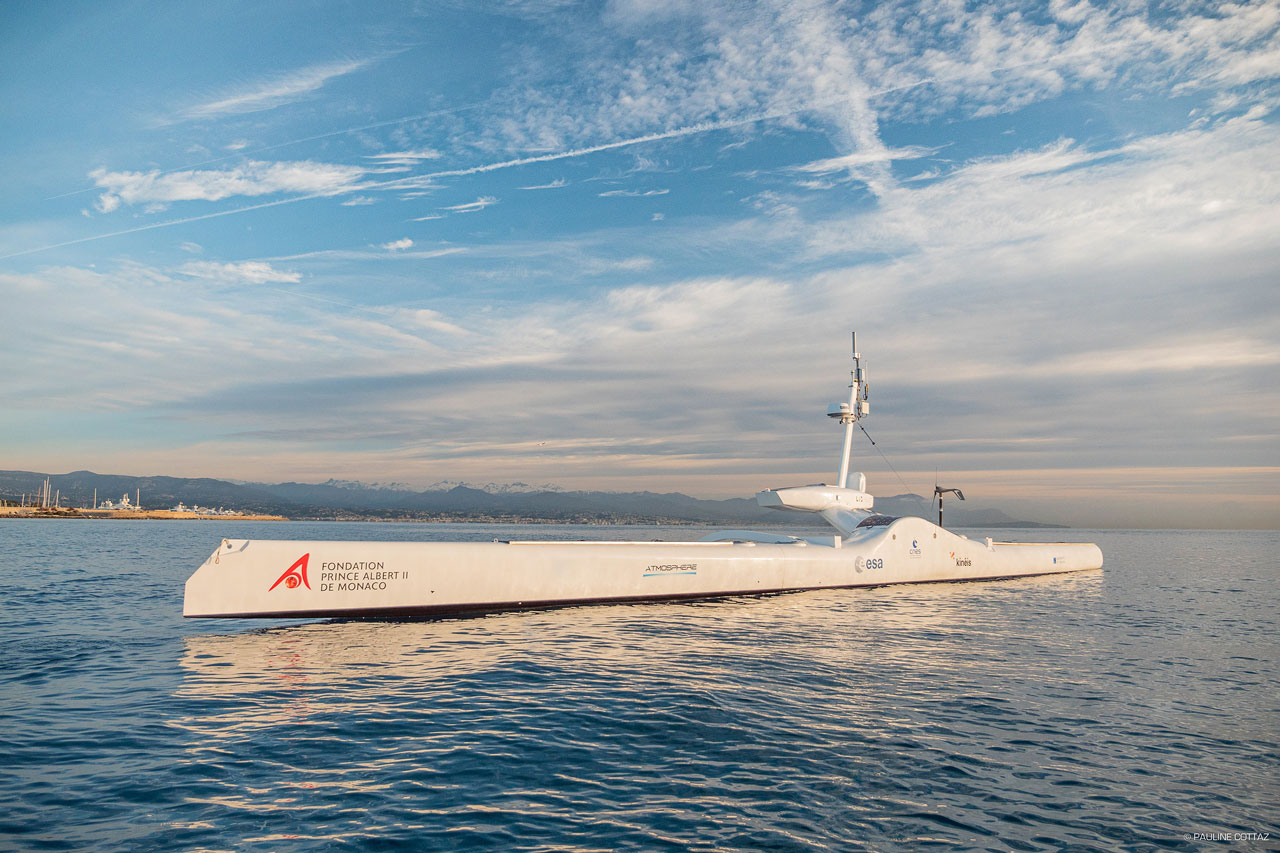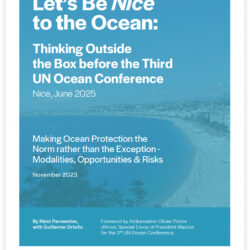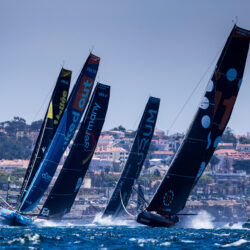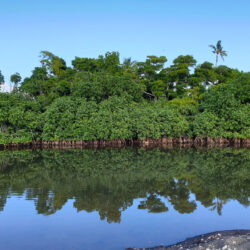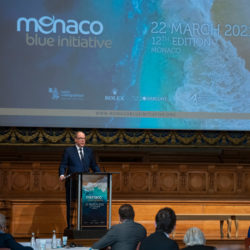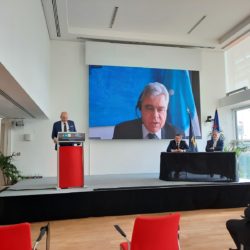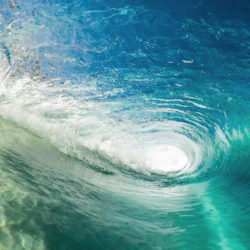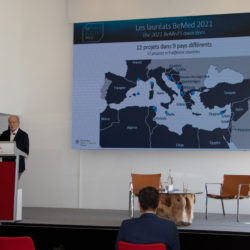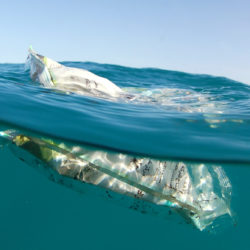This coastal fringe within the Pelagos Sanctuary is one of the most built-up and travelled through areas in the world, so a natural victim of noise pollution. How does the pollution affect different cetacean species? Does noise hinder the explorers of the abyss, in their fundamentally acoustic world?
The research, under the leadership of bioacoustician Hervé Glotin from the University of Toulon (CNRS LIS DYNI), had to be interrupted in mid-March 2020, at the height of the global pandemic. Absolute calm suddenly reigned over the sea. Quick as a flash, the researchers decided to send their silent drones back to the real-life laboratory to record the biophony* of a Mediterranean untouched by machine noise, a situation that has not occurred since the advent of the industrial era. Recognising the incalculable scientific importance of listening to marine life during that historic pause in human activity, the Prince Albert II of Monaco Foundation came on board to help launch the extraordinary Quiet Sea mission. Against the backdrop of a world in lockdown the catamaran cast off from the port of Toulon on 23 April for 17 days to record sounds from the accompanying autonomous Sphyrna vessels. Back on land after the expedition, Hervé Glotin delivered the uplifting initial findings.
*The collective sound emitted by vocalising animals in a given environment.
Figures
Listening along 400 kilometres of coastline (from the Calanques to Monaco) revealed a less polluted Mediterranean:
- 2 times less hydrocarbon pollution
- 10 times quieter: a decrease of 10 decibels in the low frequencies
- Scattered with “wells of silence” – areas where the decrease reaches 12 decibels
- 6 times longer: the distance travelled by sounds emitted by cetaceans

Interview with Hervé Glotin
How would you describe the soundscape of the Mediterranean during lockdown?
The coast was really quiet. Even 10 nautical miles from land (around 20 kilometres), the coast no longer radiated sound. Absolute silence. It was unprecedented because even in the middle of winter when pleasure boating is greatly reduced, fishing boats go out in the morning and return in the evening and there are daily shuttle services and ferries etc. But that constant traffic had gone. Noise usually radiates from the ports, but the ports were peaceful. Try to imagine a fringe of silence at least 10 nautical miles wide – that’s an enormous area!
rsea signals we recorded during the Quiet Sea mission showed the absence of frequencies coming from human activity. The environment was spared the normally loud intrusive sounds that disturb cetaceans. Those animals sense their location, communicate and locate their prey through sound. Imagine a persistent fog around your house suddenly lifting; you can see your surroundings again and travel much further. That’s what happened for the cetaceans during lockdown when the coastal traffic stopped. Suddenly their horizon widened. They dived into a world 10 times larger.
In that real-life laboratory, were you able to make unusual cetacean sound recordings?
On the first day of sailing, a group of bottlenose dolphins (Tursiops) gathered around our catamaran, not far from Port-Cros, in an environment usually frequented by shuttle boats. Bottlenose dolphins don’t usually follow drifting boats. But that time, for an hour, there were about 20 around us. They were calm. We could hear their powerful breathing and their vocalisations. It was really lovely! We were able to make some very interesting recordings in those optimal conditions. We recorded their vocalisations using five hydrophones attached to the drones. That will enable us to find out which animal was making the sound, when and in which direction. With that level of listening quality, we will try to define each individual’s sound signature, its own way of vocalising. That data forms a very rich initial corpus that we haven’t yet finished processing, but which is very promising. We hope to be able to better understand the communication system of the dolphins that took advantage of the silence to reclaim the coastal spaces. We saw more bottlenose dolphins in the Calanques. That site has very particular acoustics because the underwater cliffs send back a lot of echo. In normal circumstances, constant engine noise creates a hostile environment. With no boats in the silent Calanques, the cetaceans were very tranquil and their vocalisations echoed back rather than engine noise! We recorded signals untouched by anthropogenic pollution, which will provide a benchmark.
Are we talking zero noise pollution – a norm we can strive towards?
Most of our recordings could be made with no boats within 10 nautical miles. Offshore shipping traffic continued, but it was far out at sea and the coastal fringe wasn’t affected at all. The signals we obtained are therefore free from anthropogenic noise pollution. In the Baie des Anges, we were able to capture sounds as subtle as shrimp signals! Ideal experiments often only take place on charts with equations. But there we were, doing them at sea! In that very silent environment, the smallest boat passing by provided us with the opportunity to take measurements for the sole purpose of proving the mathematical models of underwater noise propagation. Without noise pollution, vocalisations by large diving mammals – rorqual and sperm whales – can be up to six times longer. That implies more effective and more frequent contact between groups than when the environment is anthropised (transformed by human activity). Which is very beneficial for the mammal populations as they can enjoy improved organisation, coordination and chances of reproduction.
Have you ever recorded such an unspoiled underwater landscape on a previous expedition?
I heard that same “silence” in the ocean at the edge of the Atacama Desert, along the South American coast, when I made recordings of blue whales in 2017. It was interrupted from time to time by a passing fishing boat or the explosion of dynamite by illegal fishermen. Apart from those anthropogenic events, the reference level was similar to the one observed in the Med during lockdown. There are still areas on Earth where we find that quality of silence. But they are becoming increasingly narrow and scarce, meaning there’s less and less favourable space for megafauna, which are finding it progressively more difficult to socialise peacefully, and feed and reproduce effectively. Those three essential functions rely on the quality of their sound exchanges. That’s why we have every reason to worry about Mediterranean cetaceans, as they live near coastlines that are among the world’s busiest, alongside the big American ports.
Can bioacoustics improve the protection of cetaceans?
One of our key acoustic observations (see box) shows that there are areas that play an important role for the Mediterranean sperm whale, a species in constant decline. Taking into account the estimated numbers of individuals and the risks they’re exposed to, we can suppose that we’re the last or penultimate generation to observe these animals close to coastlines. I’m not saying it’s the end of marine megafauna on our planet, but on ultra-busy coasts such as our north-west sector of the Mediterranean, it’s problematic. Let’s make as many observations as we can and use the results to improve the management of our maritime space.
We listened to sperm whales hunting off Monaco, 12 miles from the coast, and uncovered a group of super-predators acting in total tranquillity. Let’s make sure that’s normal behaviour. As long as we have that, there’s hope. We need to focus attention on the oceanographic characteristics of the different sites; on how each species uses them. That sperm whale “dining room” we identified can be designated a sanctuary; bioacoustics reveals intense hunting activity and socialising among sperm whales experiencing stability. But if the animals’ communication is drowned out by maritime traffic, they will no longer be able to come and feed and it isn’t certain they’ll find a comparable site elsewhere in the area. The same goes for military zones, where a speed limit should be imposed – even decreasing the emission of decibels by 10 to 20% would have a very significant impact – or they should be made into low-traffic areas.
Suddenly the cetaceans’ horizon widened. They dived into a world 10 times larger.”
Tracking sperm whales 2,000 metres deep
On 14 January 2020, during the Sphyrna Odyssey mission, the hydrophones fixed under the sea drones’ hulls recorded the clicks of sperm whales in the waters off Monaco. Two thousand metres below the surface, twelve nautical miles from the coast, lies a deep valley where currents carry in an abundance of squid.
The site, which covers 10 relatively shipping-free kilometres, boasts oceanographic features that make it an ideal hunting ground for the world’s largest predators. The bioacousticians recorded a scene that day that they were only able to decipher, using very advanced signal analysis, when they returned to the laboratory.

“We isolated the sperm whales’ clicks using artificial intelligence algorithms and located the animals in 3D. The trajectories of the group of sperm whales clearly demonstrated intelligent collaborative hunting 2,000 metres below the surface!” says an excited Glotin, who converted the scene into images. The signals indicate that the predators take correlated trajectories, at a distance of approximately 500 metres, that they gather in groups at a depth of 500 metres and that the mothers certainly accompany the juveniles, which are learning to use their sonar and don’t yet have the ability to dive deeper. The matriarchs of the group descend to 1,000 meters, point their sonar beams in the same directions, explore, then go back up towards the juveniles. One of them dives to a depth of 1,700 metres and follows a meandering route, as if combing the area.
“Animals coordinate themselves through sound,” explains the CNRS researcher. “During their dives lasting about 50 minutes, cetaceans are in full energy-saving mode; every movement represents oxygen consumption and therefore less time for investigating the area. Immersed in total darkness, they explore the environment in pods, relying entirely on their sound emissions, which are the most powerful in the animal kingdom. Sperm whales pool their expertise and sounds to detect their prey, sometimes they herd it and then they each have their way of capturing it. During that hunt they probably ate almost half a tonne of squid, which they need on a daily basis. These extremely tense hunts require them to work together more collaboratively, with even more cunning and precision to optimise their routes. Their survival depends on it.”
